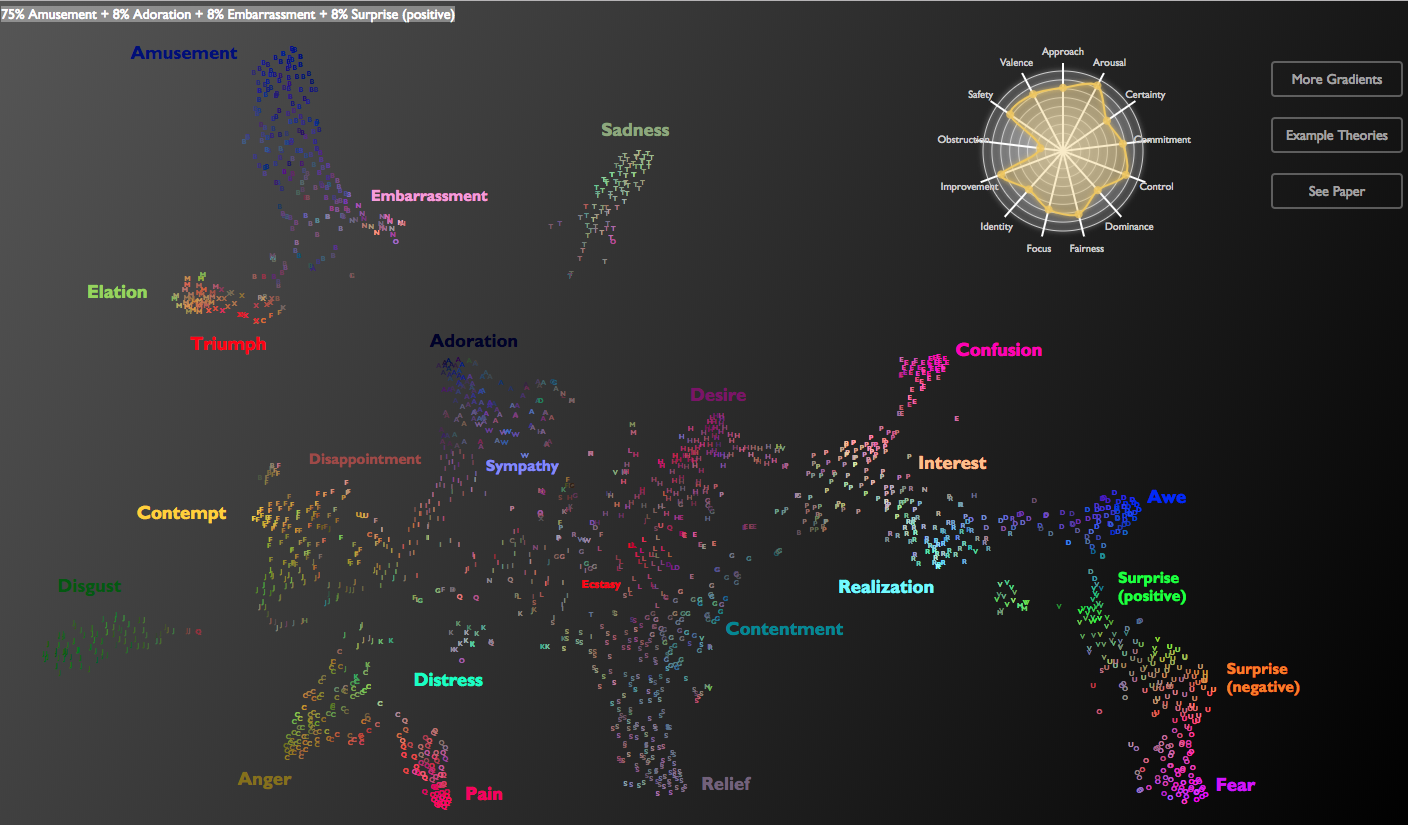This Interactive Map of Human Emotional Sounds Is Both Horny and Horrifying
This interactive map built by UC Berkeley scientists lets you listen to the full range of nonverbal emotions in quick shrieks, screams, sighs and groans.
If you roll your mouse through the whole map quickly, it's a cacophony of agony and hysteria. Rolling around in one section at a time sounds like more like a group of people being awestruck or tortured or having an orgy, depending on your section choice. Actually, they all kind of sound like orgasms, if you let your imagination wander.

The map was created as part of a December 2018 study published in the journal American Psychologist. Researchers from UC Berkeley set out to analyze "vocal bursts," or short, nonverbal exclamations. They recorded more than 2,000 vocal bursts from 56 male and female participants (some were professional voice actors, others weren't) from locations and cultures ranging from the United States, India, Kenya, and Singapore. The researcher recruited 1,000 people using Amazon's Mechanical Turk marketplace to analyse these responses.
They found that the crowdsourced analysis of the vocal bursts fit into at least 24 distinct kinds of emotion, including amusement, anger, awe, confusion, contempt, contentment, desire, disappointment, disgust, distress, ecstasy, elation, embarrassment, fear, interest, pain, realization, relief, sadness, positive and negative surprise, sympathy, and triumph.
Next, the researchers sampled reaction sounds from YouTube videos of scenes like babies falling or puppies being hugged. Eighty-eight adults reviewed these sounds, and again, categorized them into 24 emotions.
They placed the sounds and emotional analysis on an interactive scatter plot, where scrolling over each emotional point on the map is broken down into its parts, depending on how people interpreted the sound. For example, a sampling near the center of "ecstasy" is 33 percent ecstasy, 33 percent relief, 8 percent contentment, 8 percent disappointment, 8 percent disgust, and 8% Distress.
"These results show that emotional expressions color our social interactions with spirited declarations of our inner feelings that are difficult to fake, and that our friends, co-workers, and loved ones rely on to decipher our true commitments," study lead author Alan Cowen, a Ph.D. student in psychology at UC Berkeley, said in a press release.